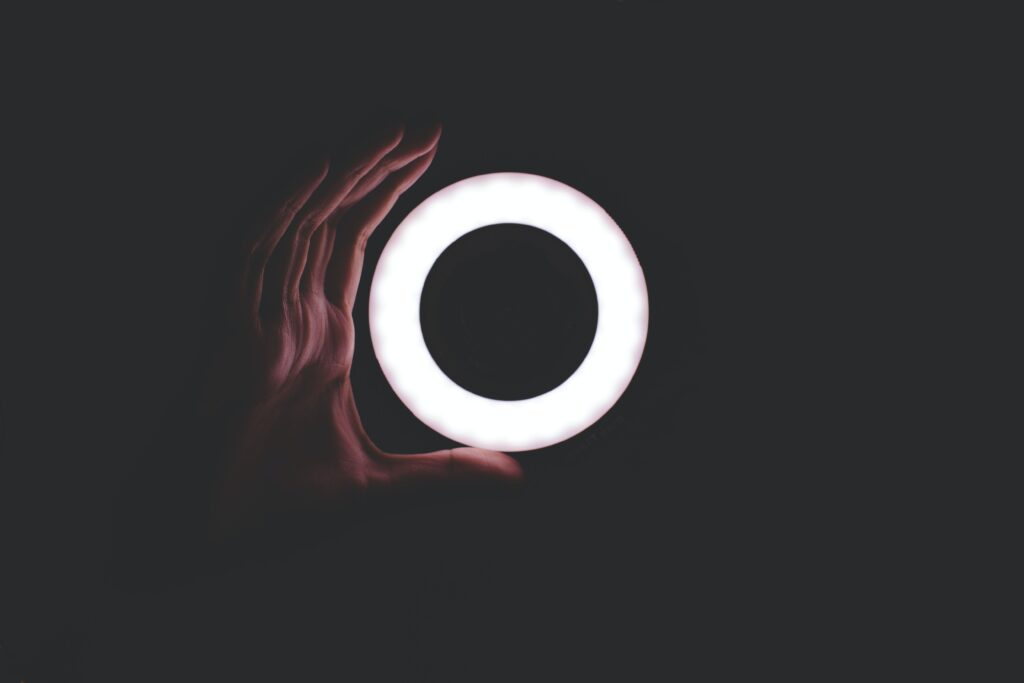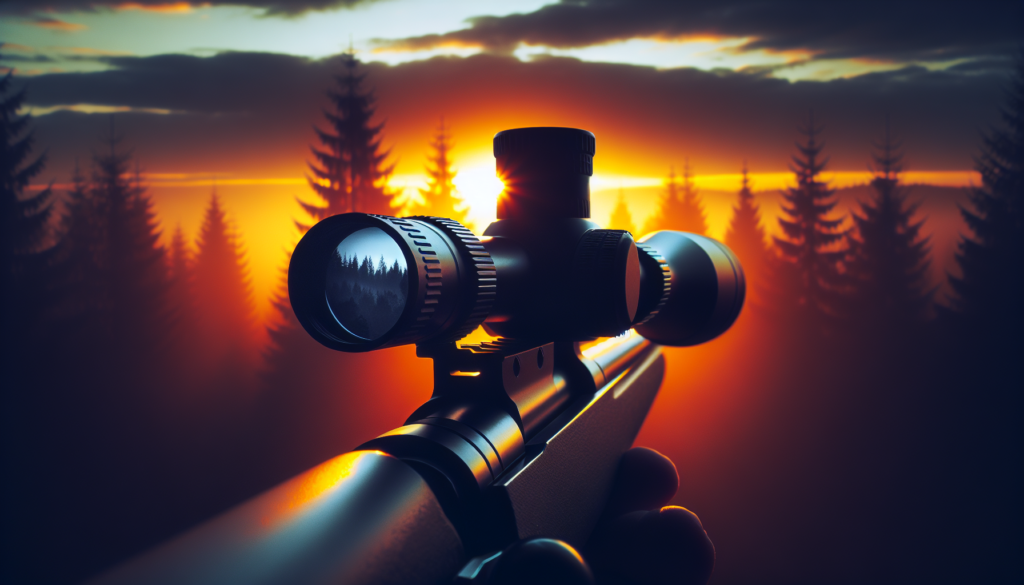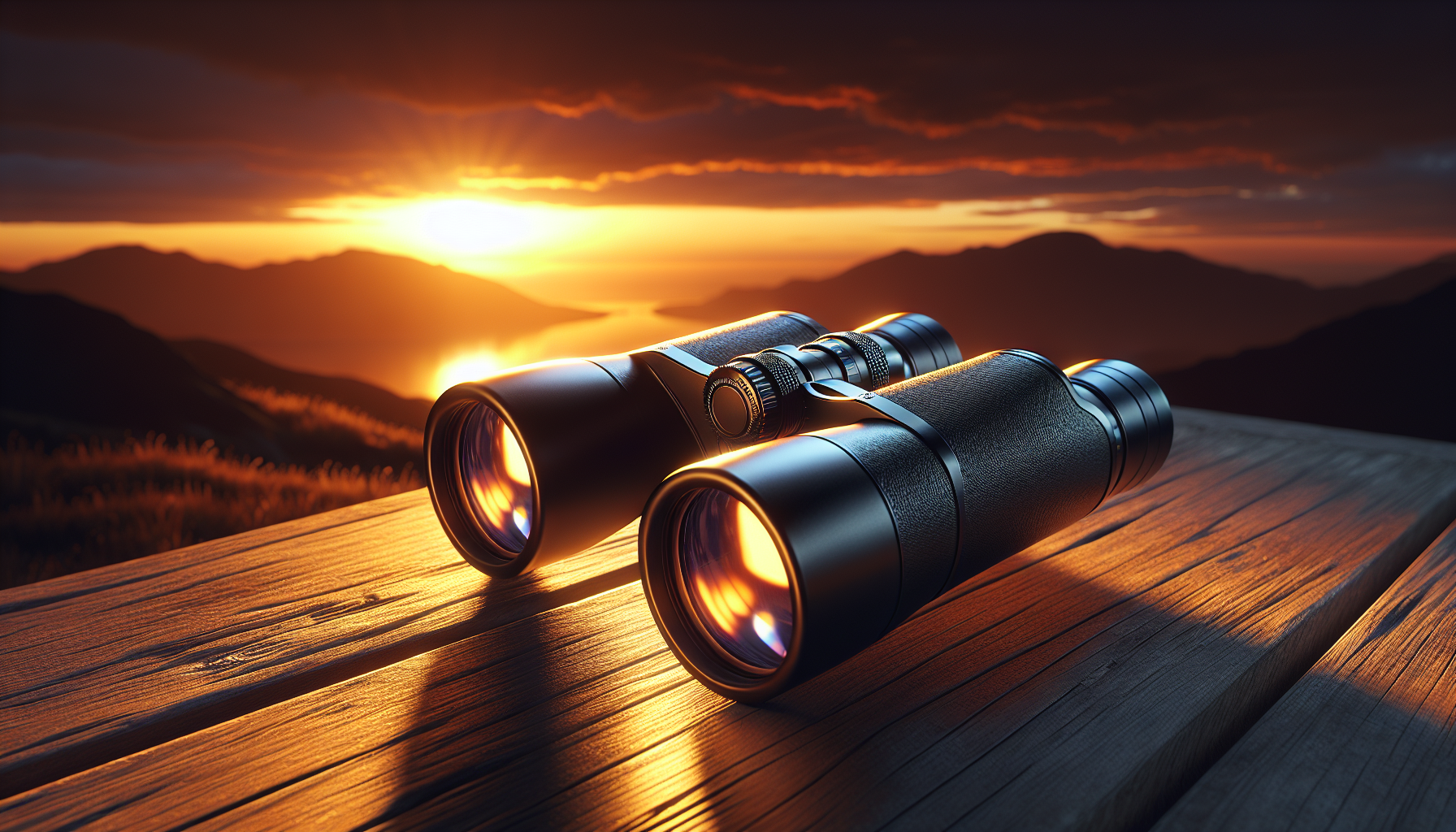Imagine yourself out in the wilderness, waiting for the perfect moment to spot your prey. As the sun sets and the light begins to fade, you start to wonder, can hunting optics still be effective in these low light conditions? It’s a question that many avid hunters have pondered, and in this article, we will explore the possibility of using hunting optics in low light and shed light on whether they can truly deliver the clarity and precision needed for a successful hunt. So, if you’re ready to uncover the secrets of hunting optics in low light, let’s embark on this adventure together.
Understanding Hunting Optics
Hunting optics refer to the various optical devices that are specifically designed to enhance a hunter’s visibility and accuracy while aiming at targets. These devices include binoculars, riflescopes, spotting scopes, and night vision devices. Hunting optics are crucial tools for hunters as they provide better magnification, image clarity, and light transmission, resulting in improved accuracy and success in the field.
Types of Hunting Optics
There are different types of hunting optics available, each serving a specific purpose. Binoculars, for instance, are handheld devices that provide hunters with a wider field of view and better depth perception. Riflescopes, on the other hand, are attached to firearms and offer precise aiming points for increased accuracy. Spotting scopes are high-powered telescopes used for observing targets at longer distances. Lastly, night vision devices enable hunters to see in complete darkness by utilizing the existing ambient light or infrared technology.
How Hunting Optics Work
Hunting optics utilize various mechanisms to enhance a hunter’s vision. One of the most important factors is the lens diameter, which determines the amount of light that can enter the device. The larger the lens diameter, the more light it can gather, allowing for a better image in low light conditions. Additionally, coatings applied to the lens surface can improve light transmission and minimize reflections, resulting in brighter and clearer images.
Moreover, the quality of the glass used in hunting optics plays a crucial role in the overall performance. High-quality glass minimizes distortion and aberrations, providing a sharper and more accurate image. Magnification levels also contribute to the effectiveness of hunting optics. By increasing magnification, hunters can zoom in on distant targets and have a clearer view to make accurate shots.
Importance of Hunting Optics
Hunting optics are of paramount importance in the pursuit of game, particularly in low light conditions. These devices enable hunters to identify targets more effectively, assess their surroundings, and make precision shots. In low light conditions, such as dawn or dusk, human vision is significantly impaired, and relying solely on natural eyesight could lead to missed opportunities or misjudgment of distances.
By utilizing hunting optics in low light conditions, hunters can compensate for human visual limitations and prevent potential risks. These devices provide better visibility, improve depth perception, and enhance the ability to spot game from a distance. Furthermore, hunting optics allow hunters to assess the target’s behavior or identify its species with greater precision. Overall, hunting optics greatly contribute to a hunter’s success and safety in low light conditions.
Challenges of Hunting in Low Light Conditions
Hunting in low light conditions presents several challenges that can hinder a hunter’s visibility and hunting capabilities. Understanding these challenges is crucial for selecting the right hunting optics to overcome them effectively.
Vision Limitations in Low Light Conditions
In low light conditions, our eyes experience reduced color perception, decreased depth perception, and compromised image clarity. This is mainly due to the limited amount of light available for the eyes to gather and process. As a result, it becomes difficult to identify targets accurately, assess distances, and spot potential obstacles or hazards in the surrounding environment.
Risk Factors in Low Light Hunting
Engaging in hunting during low light conditions without appropriate optics can be risky. Without clear visibility, hunters may mistake objects for game or fail to identify potential dangers. Additionally, misjudging distances in low light can lead to inaccurate shots and potential injuries to both the hunter and the game.
Importance of Optics in Low Light Conditions
Hunting optics play a crucial role in addressing the challenges of low light hunting. These devices enhance a hunter’s vision by gathering and transmitting more light, thus compensating for the limitations of human eyesight. By utilizing optics designed for low light conditions, hunters can effectively overcome the challenges posed by reduced visibility and significantly improve their hunting experience.
Characteristics of Hunting Optics Ideal for Low Light Conditions
When selecting hunting optics for low light conditions, there are certain characteristics that hunters should consider to ensure optimal performance.
Lens Diameter
One of the primary factors to consider is the lens diameter of the optics. A larger lens diameter allows more light to enter the device, enhancing visibility in low light conditions. Optics with larger objective lenses, typically around 40-50mm in diameter, are recommended for hunting in low light as they maximize light gathering capabilities.
Coating on the lens
The lens coating is another critical aspect to consider. Optics with multiple layers of anti-reflective coatings on the lens surfaces are ideal for low light conditions. These coatings reduce glare, increase light transmission, and enhance image brightness, resulting in a clearer and more detailed view for the hunter.
Quality of the Glass
The quality of the glass used in hunting optics is crucial to ensure optimal performance. High-quality glass reduces distortion and color fringing, providing a sharp and true-to-life image. When hunting in low light conditions, it is essential to choose optics with premium glass to maximize visibility and clarity.
Magnification Levels
The magnification levels of hunting optics also play a vital role in low light conditions. It is important to strike a balance between magnification and image brightness. Higher magnification may narrow the field of view and decrease image brightness, especially in low light. Optics with moderate magnification, such as 8x or 10x for binoculars, are often recommended for low light hunting to maintain a wider field of view and adequate light transmission.

Role of Binoculars in Low Light Hunting
Binoculars serve as essential tools for hunters, particularly in low light conditions. They offer a wide field of view, improved depth perception, and better image clarity.
Function of Binoculars in Hunting
Binoculars allow hunters to observe their surroundings, scan for potential game, and assess the behavior and characteristics of the target from a distance. They provide a clear and magnified view of the target, enabling hunters to make accurate judgments and plan their approach effectively.
Effectiveness of Binoculars in Low Light Conditions
In low light conditions, binoculars with larger lens diameters and high-quality glass can substantially enhance a hunter’s visibility. The wider field of view allows more light to enter, and the superior optics minimize distortions, resulting in a clearer and brighter image. Binoculars with adequate light transmission capabilities are particularly useful during dawn and dusk when natural light is limited.
Choosing the Right Binoculars for Low Light Hunting
To ensure optimal performance in low light conditions, hunters should consider binoculars with a lens diameter of at least 40-50mm. Additionally, selecting binoculars with high-quality glass and multiple anti-reflective coatings on the lens surfaces further enhances light transmission. It is also crucial to choose binoculars with a moderate magnification level to maintain a wide field of view and adequate image brightness.
How Riflescopes Function in Low Light Conditions
Riflescopes are indispensable tools for hunters, especially when hunting in low light conditions. They provide precise aiming points, increased target acquisition, and improved accuracy.
Understanding Riflescopes
A riflescope is a telescopic sight mounted on a firearm, enabling hunters to accurately aim at their targets. Riflescopes consist of an optical system, reticles, adjustment knobs, and lens coatings. They come in various magnifications and features to cater to different hunting needs.
Benefits of Using Riflescopes in Low Light Conditions
In low light conditions, riflescopes offer significant advantages to hunters. The illuminated reticles in some riflescopes enhance target visibility and help to make accurate shots even in dimly lit environments. The adjustable objective lenses allow hunters to focus on the target more precisely, compensating for reduced visibility. Riflescopes with quality glass and fully multicoated lenses ensure maximum light transmission, resulting in brighter and clearer images.
Selecting the Right Riflescope for Low Light Hunting
Choosing the right riflescope for low light hunting involves considering several factors. Optics with larger objective lenses, typically around 40-50mm, are recommended as they allow more light to enter the scope. Additionally, selecting riflescopes with illuminated reticles can greatly enhance visibility in low light conditions. High-quality glass and multicoated lenses are essential for better light transmission and improved image clarity. It is also important to consider the appropriate magnification level based on the hunting environment and target distance.

Significance of Spotting Scopes in Low Light Conditions
Spotting scopes are powerful telescopes used by hunters to observe and assess targets at longer distances. They offer superior magnification capabilities and are invaluable tools for low light hunting situations.
Defining Spotting Scopes
Spotting scopes are portable telescopes designed to provide high magnification and image clarity for hunters. They are typically used for spotting and identifying game, surveying the terrain, and assessing the behavior and characteristics of animals from a safe distance. Spotting scopes are commonly utilized in long-range hunting scenarios and are essential for low light conditions.
Utilizing Spotting Scopes in Low Light Hunting
During low light hunting, spotting scopes enable hunters to detect and observe targets at extended distances with greater detail. Spotting scopes with larger objective lenses allow for more light gathering, resulting in brighter and clearer images. Having the ability to carefully study the behavior and movement of game in low light conditions can significantly increase the success rate of hunters.
Picking the Suitable Spotting Scope for Low Light Conditions
For low light hunting, hunters should consider spotting scopes with larger objective lenses, typically around 60-80mm, to maximize light transmission. Spotting scopes with high-quality glass and advanced coatings further enhance visibility and image clarity. Additionally, features such as built-in reticles for range estimation and image stabilization systems can be beneficial in low light conditions. It is essential to choose a spotting scope that offers adequate magnification for the specific hunting environment and target distance.
Impact of Night Vision Devices on Low Light Hunting
Night vision devices are invaluable tools for hunting in complete darkness or extremely low light conditions. They utilize advanced technology to amplify available light or provide their own source of illumination to enable hunters to see in the dark.
Understanding Night Vision Devices
Night vision devices, commonly referred to as NV devices, come in various forms such as goggles, monoculars, and rifle scopes. They work by capturing and amplifying available light, including ambient light or infrared radiation, and converting it into a visible image. These devices allow hunters to see clearly in situations where natural night vision would fail.
Advantages of Night Vision Devices for Low Light Hunting
The primary advantage of night vision devices in low light hunting is the ability to see in complete darkness. They provide hunters with a clear and detailed image of their surroundings, allowing them to navigate safely and detect game with ease. Night vision devices also enhance situational awareness, reducing the risk of potential accidents or encounters with unwanted wildlife. They are particularly effective during moonlit nights or in areas with minimal light pollution.
Choosing the Appropriate Night Vision Device for Hunting
Selecting the right night vision device for low light hunting depends on several factors such as personal preferences, hunting style, and budget. Factors to consider include the device’s generation (1st, 2nd, 3rd, or 4th), its compatibility with other hunting equipment, resolution, detection range, and battery life. It is essential to choose a night vision device that offers reliable performance, durability, and suits the specific hunting needs and conditions.

Adapting Hunting Optics for Low Light Conditions
To optimize the performance of hunting optics in low light conditions, certain adjustments and maintenance practices should be implemented.
Adjustment of Hunting Optics for Low Light
When hunting in low light conditions, adjusting the optics to suit the lighting environment is crucial. For binoculars, adjusting the interpupillary distance allows for a comfortable and clear view. Riflescopes often feature adjustable reticles and objective lenses that can be fine-tuned to enhance focus and clarity. Spotting scopes may require adjustments in both magnification and focus to optimize visibility. Additionally, night vision devices may have different settings for gain control and illumination that need to be adjusted depending on the ambient light conditions.
Maintenance Tips for Hunting Optics in Low Light Conditions
Proper maintenance of hunting optics ensures optimal performance in low light conditions. Keeping lenses clean and free of debris or smudges is essential for maximizing light transmission. Using lens cleaning solutions and microfiber cloths specifically designed for optics is recommended to prevent any damage. Regularly checking for alignment issues, such as reticle alignment in riflescopes, is crucial to maintain accuracy. It is also important to store and transport hunting optics in protective cases to prevent any potential damage.
Technologies Enhancing Hunting Optics for Low Light Conditions
Technological advancements have led to the development of various features and technologies that enhance the performance of hunting optics in low light conditions.
Role of Technology in Improving Hunting Optics
Technology plays a significant role in improving hunting optics for low light conditions. Advanced lens coatings, such as anti-reflective coatings and phase correction coatings, minimize light loss and increase light transmission, resulting in brighter images. Electronic reticles and illuminated reticles in riflescopes enhance visibility and aid precise aiming, especially in dimly lit environments. In night vision devices, advancements in sensor technology and image intensification have greatly improved image quality and detection ranges.
Emerging Technologies Beneficial for Low Light Hunting
Several emerging technologies are poised to further enhance hunting optics for low light conditions. Some examples include thermal imaging technology, which detects heat signatures and provides clear visibility regardless of ambient light conditions. Laser rangefinder integration in riflescopes and spotting scopes enables accurate target range estimation in low light. Additionally, artificial intelligence (AI) algorithms are being developed to assist hunters in identifying and tracking game more effectively in challenging lighting situations.
Conclusion: The Viability of Hunting Optics in Low Light Conditions
Hunting optics play a crucial role in providing hunters with enhanced visibility, accuracy, and safety, especially in low light conditions. Whether utilizing binoculars, riflescopes, spotting scopes, or night vision devices, hunters can overcome the challenges of reduced visibility and make accurate shots with confidence.
By understanding the characteristics of hunting optics ideal for low light conditions and selecting the appropriate devices, hunters can significantly improve their hunting experience. Adjusting and maintaining hunting optics for low light conditions ensures optimal performance, while advancements in technology continue to push the boundaries of what is possible in terms of visibility and image quality.
In conclusion, hunting optics are indispensable tools that enable hunters to navigate and spot game effectively in low light conditions. These devices provide valuable assistance, enhance safety, and increase the chances of a successful hunt. With the right hunting optics, hunters can confidently venture into low light environments and make precise shots with ease. The future of hunting optics looks promising, with ongoing advancements set to revolutionize low light hunting further.



